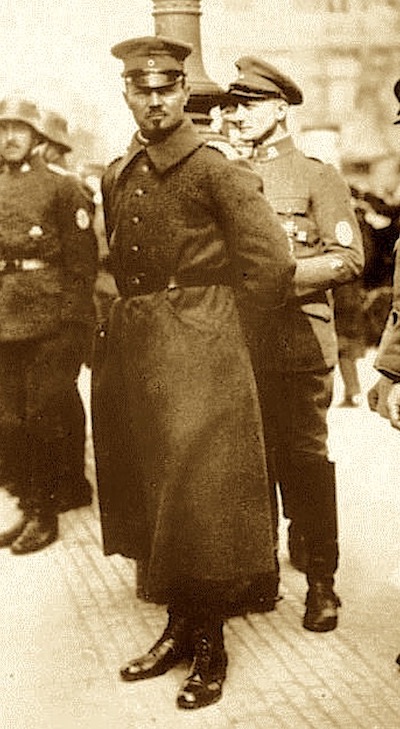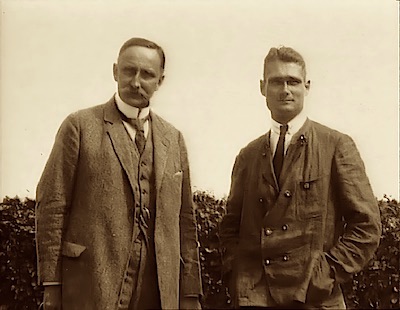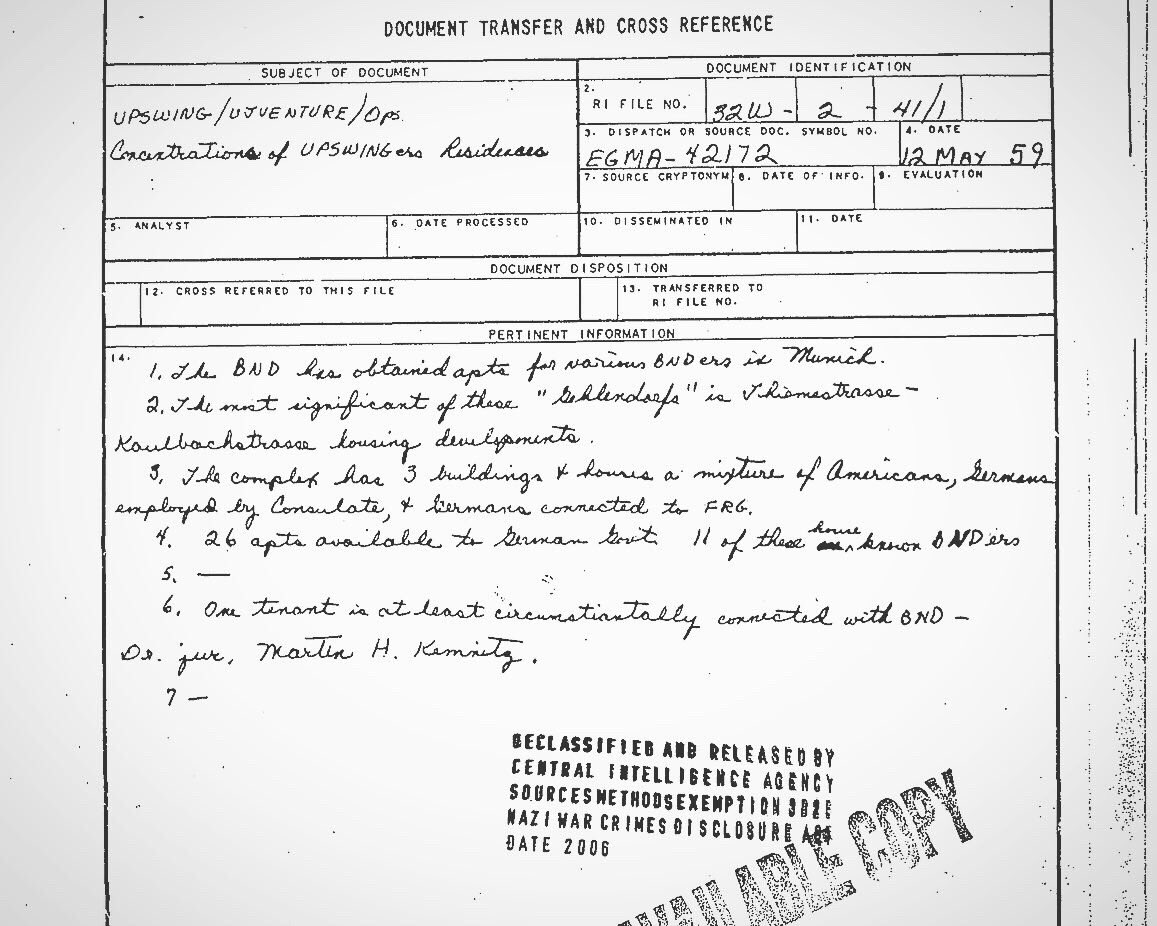Dark Mode
Listen to this article
Munich
Few people seem to have seen or noticed Steven Spielberg's 2005 film "Munich". While many of the Jewish star director's other films have enjoyed wide receiption, some circles seemed to want this particular film to be ignored as quickly as possible and banished to oblivion forever, apparently. The film impressively shows how the terrorist attacks on the 1972 Olympic Games in the Bavarian capital marked Munich as the beginning of international terrorism. Only after the catastrophic murders of top Jewish athletes, which have not been fully explained to this day, did the idea of a terrorist attack abroad become a viable political option.



Munich has been the origin of a whole series of extremely unusual circumstances for quite some time. To explain the whole story, one would have to start around 1918, just after the end of World War I. At that time, ordinary marines returning to their German home ports in the North and Baltic Seas were so fed up with the behavior of their elite officers on board that they revolted against the extremely hierarchical military structures, initially. During the maritime voyages, which sometimes lasted for many months, these officers behaved sort of comparable to the last French kings in Versailles, all while their sailor comrades below deck literally starved and died under terrible living conditions.
Around the time of the German November Revolution of 1918-19 and the replacement of the German Empire by the Weimar Republic, originally brought about by the rebellious sailors from the Northern ports of Wilhelmshaven and Kiel, a former naval officer named Hermann Erhardt decided to establish the so-called "Organisation Consul". The mostly militarily defeated officers as the last defenders of the German Kaiser refused to recognize the new political reality shaped by the then-newly formed Councils, or Räte.
Naval Officer Hermann Erhardt The name of Erhardt's militia organisation derives from the "Consuls" of the last Roman republic, an elite Roman political class with high powers who carried so-called "fasces" with them during public appearances, a strange bundle of wood wrapped around a long stick with a double-axed sword on top.
The Marine Brigade Erhardt, which grew to over 4000 men, chose none other than Munich as their home for "Organisation Consul". Its militiamen were among the first to wear the infamous Hakenkreuz swastika on their helmets as early as 1919. It was only years later, after the NSDAP was founded in Munich, that the swastika was adopted as the main Nazi symbol and attempted to be worn around the world. Camouflaged by the headquarters of the wood manufacturing company Bayerische Holzverwertungsgesellschaft in Munich and covered by then president of Munich's police Ernst Pöhner, Erhardt's "Organisation Consul" coordinated terrorist acts all over Germany in the early 1920s. A number of anti-monarchist political opponents were simply killed, including former Foreign Minister Walter Rathenau. An assassination attempt on Prime Minister Philipp Scheidemann failed. The nationwide "Kapp Putsch" of 1920, prepared and executed by Erhardt's "Organisation Consul," was only narrowly unsuccessful. Successful, however, was the direct suppression of the anti-monarchical council movement in Munich, whose leader and first Minister-President of the Free State of Bavaria, Kurt Eisner, was assassinated in the streets of Munich in February 1919 by Anton Graf von Arco, an aristocrat presumably connected to the 'Organisation Consul'. For whatever Catholic reasons, the people of Bavaria had just voted overwhelmingly for a conservative political party in the local elections shortly before, while in almost all other regions of Germany the people had mostly applauded the end of the monarchy during turbulent times.
Many features of the political-fascist movements in Europe can be traced back to the Einwohnerwehre or residents' milita in Bavaria. Panicked fear over the mostly social-democratic political councils or Räte as a replacement for the extremely pyramid-organised Reich with the emporer at its top led the former aristocratic leadership also in Munich to brand all new political realities from the north as "dangerously communist". Throughout Bavaria, citizens were armed to fight any and all leftist. The Bavarian Citizens' Army organised shooting competitions and marches to the center of Munich, in which tens of thousands proudly participated in flag parades - even attracting the attention of the Allies of WWI. The Bavarians wore already here in these 1920 mass events clearly visible armbands as a sign of membership of the citizens' militia.
Due to the failed Kapp Putsch and the Allies' intervention, the Bavarian population was disarmed and the residents' militia officially abandoned and prohibited in 1921. However, after his first failed coup attempt of 1923
Karl-Ernst Haushofer with Rudolph Hess igniting from Munich's Buergerbraeukeller, Adolf Hitler really got going with Bavarian support following his nobel prison stay in nearby Landsberg.
There, in Landsberg prison, Hitler was accompanied by his friend Rudolph Hess. Hess arrived in Munich in 1919, where he enrolled in various studies at the University of Munich and developed a close student-teacher friendship with one of his professors named Karl-Ernst Haushofer. Munich's very own Professor Haushofer, a believer in the nonsensical and now scientifically debunked claim that human genomes would improve only through and by the act of sexual reproduction and evolution, visited Hitler and Hess in Landsberg Prison from the summer to fall of 1924. Every Wednesday from June 24 to November 12, 1924, Haushofer traveled the 100 km from Munich to Landsberg Prison for intensive morning and afternoon sessions with Hitler and Hess. It was Karl-Ernst Haushofer of Munich who also implanted in the minds of his two prison students the Darwinian notion that a genetically superior race has the right to take space from so-called 'inferior races' and thus expand its Lebensraum.
The beginnings of the entire NSDAP and the National Socialist movement were hence impossible without the support and backing of many explicitly in Bavaria and Munich. Soon, the remains of former 'Organisation Consul' were also integrated into the National Socialist SS Division, although naval officer Erhardt apparently had not gotten particularly along with Hitler. Erhardt later emigrated from Nazi Germany and became an Austrian citizen.
While in many places it was thought that the Nazi Party, its high-ranking generals, officers and responsible persons had been completely removed from the German state system after 1945, there were again astonishing exceptions in Bavaria and especially in Munich. Reinhard Gehlen, for many years a member of Adolf Hitler's inner circle of military advisors, dumped loads of air photographs from Russia - for which he had been responsible as a high-ranking Nazi general of the Aufklärung Ost division - in waterproof tons in a Bavarian lake shortly before the end of the war. The Americans were thrilled not only by the many air images, but also by his spy network in Russia and elsewhere. So much so that Reinhard Gehlen was quickly ordered to the United States in late 1945, where he also helped found and construct the brand-new CIA from 1948 on.
Obviously, Reinhard Gehlen made a very good impression in the USA, because only a few years later he was ordered back to Germany. In the years before, with official American support, he had been allowed to found not an Organisation Consul, but now instead the Organisation Gehlen with no other than a total of 350 former SS officers. Organisation Gehlen later merged with the German equivalent of the CIA, the Bundesnachrichtendienst or BND, although it can be assumed that the actual core of the BND was precisely the Organisation Gehlen, which early on, with US support, did everything possible to ensure that not a single left-wing or former Nazi resistance organisation could become an important political force in almost any European country after the war. This is somewhat confirmed by declassified U.S. government documents showing how, during Operation Upswing, BND members of the Gehlen organization - known as Gehlendorfers - were placed as tenants in the same building complex as U.S. consulate staff in Munich in 1959. The BND, literally founded by ex-Nazi General Reinhard Gehlen who later even became the official Director of the BND, initially also chose Pullach as its headquarters for many years to come - a small village located near the Isar River on the outskirts of Munich.
After 1945, Munich of course also became a place for many war refugees. Not only for those who really were such, but apparently also for murderers. The anti-semite and Ukrainian "national hero" Stepan Bandara, recruited by the Nazis in 1939 to carry out terrorist acts against Jews in Poland among others, fled his country after the end of the war and found shelter with his family nowhere else but in Munich. There he was discovered allegedly by KGB agents, who murdered him with cyanide in October 1959, a poison heavily utilized by the Nazis. Stepan Bandara's grave remains in Munich to this day.
The BND was particularly creative in its partnership with the CIA in the decades to come. In 1970, the BND and the CIA jointly and secretly bought a majority stake in Swiss company Crypto AG through an offshore fund. The Swiss were exclusively manufacturing machines for almost all governments in the world to encrypt their highly sensitive diplomatic and inner government cables. However, some Swiss engineers were explicitly instructed to solder technical components into the machines that would allow both, BND headquarters and also the CIA, to read the supposedly fully protected messages whenever they wanted. For example, during the short-lived Falklands War, the BND in Pullach provided the British government with detailed position plans of the Argentinean armed forces, and also supported the coup d'état of dictator Pinochet in Chile, who was promptly informed of all the intentions of the Chilean government. The gigantic spy scandal was brought into light when a Swiss Crypto AG salesman was suddenly arrested in Iran for espionage in the 1970s during a routine visit there. Only with lots of diplomatic efforts was he able to return home after 9 months in an Iranian prison.
The downright amateurish decisions of Munich's police in response to the hostage-taking and particularly to the subsequent cold-blooded murder of top Jewish athletes during the 1972 Olympic Games have been proven, meanwhile. Family members of the 1972 deceased in Israel have unsuccessfully tried to sue the City of Munich over many years for compensation, only recently it was announced that further payments may be issued and that additional formerly sealed documents may be made available to the public.
Probably similar to the 2005 Steven Spielberg film "Munich". Quickly forgotten and buried deep under another annual Oktoberfest spectacle, like so much in Germany's secret capital Munich.
00:00

Munich has been the origin of a whole series of extremely unusual circumstances for quite some time. To explain the whole story, one would have to start around 1918, just after the end of World War I. At that time, ordinary marines returning to their German home ports in the North and Baltic Seas were so fed up with the behavior of their elite officers on board that they revolted against the extremely hierarchical military structures, initially. During the maritime voyages, which sometimes lasted for many months, these officers behaved sort of comparable to the last French kings in Versailles, all while their sailor comrades below deck literally starved and died under terrible living conditions.
Around the time of the German November Revolution of 1918-19 and the replacement of the German Empire by the Weimar Republic, originally brought about by the rebellious sailors from the Northern ports of Wilhelmshaven and Kiel, a former naval officer named Hermann Erhardt decided to establish the so-called "Organisation Consul". The mostly militarily defeated officers as the last defenders of the German Kaiser refused to recognize the new political reality shaped by the then-newly formed Councils, or Räte.

Naval Officer Hermann Erhardt
The Marine Brigade Erhardt, which grew to over 4000 men, chose none other than Munich as their home for "Organisation Consul". Its militiamen were among the first to wear the infamous Hakenkreuz swastika on their helmets as early as 1919. It was only years later, after the NSDAP was founded in Munich, that the swastika was adopted as the main Nazi symbol and attempted to be worn around the world. Camouflaged by the headquarters of the wood manufacturing company Bayerische Holzverwertungsgesellschaft in Munich and covered by then president of Munich's police Ernst Pöhner, Erhardt's "Organisation Consul" coordinated terrorist acts all over Germany in the early 1920s. A number of anti-monarchist political opponents were simply killed, including former Foreign Minister Walter Rathenau. An assassination attempt on Prime Minister Philipp Scheidemann failed. The nationwide "Kapp Putsch" of 1920, prepared and executed by Erhardt's "Organisation Consul," was only narrowly unsuccessful. Successful, however, was the direct suppression of the anti-monarchical council movement in Munich, whose leader and first Minister-President of the Free State of Bavaria, Kurt Eisner, was assassinated in the streets of Munich in February 1919 by Anton Graf von Arco, an aristocrat presumably connected to the 'Organisation Consul'. For whatever Catholic reasons, the people of Bavaria had just voted overwhelmingly for a conservative political party in the local elections shortly before, while in almost all other regions of Germany the people had mostly applauded the end of the monarchy during turbulent times.
The aim is to fight everything anti- and international, Judaism, social democracy and radical left parties.
Statues of the 'Organisation Consul'
Statues of the 'Organisation Consul'
Many features of the political-fascist movements in Europe can be traced back to the Einwohnerwehre or residents' milita in Bavaria. Panicked fear over the mostly social-democratic political councils or Räte as a replacement for the extremely pyramid-organised Reich with the emporer at its top led the former aristocratic leadership also in Munich to brand all new political realities from the north as "dangerously communist". Throughout Bavaria, citizens were armed to fight any and all leftist. The Bavarian Citizens' Army organised shooting competitions and marches to the center of Munich, in which tens of thousands proudly participated in flag parades - even attracting the attention of the Allies of WWI. The Bavarians wore already here in these 1920 mass events clearly visible armbands as a sign of membership of the citizens' militia.
Due to the failed Kapp Putsch and the Allies' intervention, the Bavarian population was disarmed and the residents' militia officially abandoned and prohibited in 1921. However, after his first failed coup attempt of 1923

Karl-Ernst Haushofer with Rudolph Hess
There, in Landsberg prison, Hitler was accompanied by his friend Rudolph Hess. Hess arrived in Munich in 1919, where he enrolled in various studies at the University of Munich and developed a close student-teacher friendship with one of his professors named Karl-Ernst Haushofer. Munich's very own Professor Haushofer, a believer in the nonsensical and now scientifically debunked claim that human genomes would improve only through and by the act of sexual reproduction and evolution, visited Hitler and Hess in Landsberg Prison from the summer to fall of 1924. Every Wednesday from June 24 to November 12, 1924, Haushofer traveled the 100 km from Munich to Landsberg Prison for intensive morning and afternoon sessions with Hitler and Hess. It was Karl-Ernst Haushofer of Munich who also implanted in the minds of his two prison students the Darwinian notion that a genetically superior race has the right to take space from so-called 'inferior races' and thus expand its Lebensraum.
The beginnings of the entire NSDAP and the National Socialist movement were hence impossible without the support and backing of many explicitly in Bavaria and Munich.
The BND, literally founded by ex-Nazi General Reinhard Gehlen who later even became the official Director of the BND, initially also chose Pullach as its headquarters for many years to come - a small village located directly on the Isar River on the outskirts of Munich.
While in many places it was thought that the Nazi Party, its high-ranking generals, officers and responsible persons had been completely removed from the German state system after 1945, there were again astonishing exceptions in Bavaria and especially in Munich. Reinhard Gehlen, for many years a member of Adolf Hitler's inner circle of military advisors, dumped loads of air photographs from Russia - for which he had been responsible as a high-ranking Nazi general of the Aufklärung Ost division - in waterproof tons in a Bavarian lake shortly before the end of the war. The Americans were thrilled not only by the many air images, but also by his spy network in Russia and elsewhere. So much so that Reinhard Gehlen was quickly ordered to the United States in late 1945, where he also helped found and construct the brand-new CIA from 1948 on.
Obviously, Reinhard Gehlen made a very good impression in the USA, because only a few years later he was ordered back to Germany. In the years before, with official American support, he had been allowed to found not an Organisation Consul, but now instead the Organisation Gehlen with no other than a total of 350 former SS officers. Organisation Gehlen later merged with the German equivalent of the CIA, the Bundesnachrichtendienst or BND, although it can be assumed that the actual core of the BND was precisely the Organisation Gehlen, which early on, with US support, did everything possible to ensure that not a single left-wing or former Nazi resistance organisation could become an important political force in almost any European country after the war. This is somewhat confirmed by declassified U.S. government documents showing how, during Operation Upswing, BND members of the Gehlen organization - known as Gehlendorfers - were placed as tenants in the same building complex as U.S. consulate staff in Munich in 1959. The BND, literally founded by ex-Nazi General Reinhard Gehlen who later even became the official Director of the BND, initially also chose Pullach as its headquarters for many years to come - a small village located near the Isar River on the outskirts of Munich.
After 1945, Munich of course also became a place for many war refugees. Not only for those who really were such, but apparently also for murderers. The anti-semite and Ukrainian "national hero" Stepan Bandara, recruited by the Nazis in 1939 to carry out terrorist acts against Jews in Poland among others, fled his country after the end of the war and found shelter with his family nowhere else but in Munich. There he was discovered allegedly by KGB agents, who murdered him with cyanide in October 1959, a poison heavily utilized by the Nazis. Stepan Bandara's grave remains in Munich to this day.
The BND was particularly creative in its partnership with the CIA in the decades to come. In 1970, the BND and the CIA jointly and secretly bought a majority stake in Swiss company Crypto AG through an offshore fund. The Swiss were exclusively manufacturing machines for almost all governments in the world to encrypt their highly sensitive diplomatic and inner government cables. However, some Swiss engineers were explicitly instructed to solder technical components into the machines that would allow both, BND headquarters and also the CIA, to read the supposedly fully protected messages whenever they wanted. For example, during the short-lived Falklands War, the BND in Pullach provided the British government with detailed position plans of the Argentinean armed forces, and also supported the coup d'état of dictator Pinochet in Chile, who was promptly informed of all the intentions of the Chilean government. The gigantic spy scandal was brought into light when a Swiss Crypto AG salesman was suddenly arrested in Iran for espionage in the 1970s during a routine visit there. Only with lots of diplomatic efforts was he able to return home after 9 months in an Iranian prison.
Mr. Hagelin stated that he had recently visited the Siemens people in Munich in connection with their sale of one-time-tape
cipher teleprinting machines (apparently the occasion for this visit was to tell them that he had heard of their sales of such equipment to certain countries which he thought were iron-curtain countries or were inclining in that direction). He told them he wanted to find out whether there was any basis for these stories.
Declassified CIA Memorandum on Crypto AG founder Hagelin, page 6
Declassified CIA Memorandum on Crypto AG founder Hagelin, page 6
The downright amateurish decisions of Munich's police in response to the hostage-taking and particularly to the subsequent cold-blooded murder of top Jewish athletes during the 1972 Olympic Games have been proven, meanwhile. Family members of the 1972 deceased in Israel have unsuccessfully tried to sue the City of Munich over many years for compensation, only recently it was announced that further payments may be issued and that additional formerly sealed documents may be made available to the public.
Probably similar to the 2005 Steven Spielberg film "Munich". Quickly forgotten and buried deep under another annual Oktoberfest spectacle, like so much in Germany's secret capital Munich.
Leave a comment:
Send
Send
Support independent investigative journalism. Buy me a green tea or coffee:
Buy me a Coffee
Recommended:












